The hard truths about Bangladesh’s food security
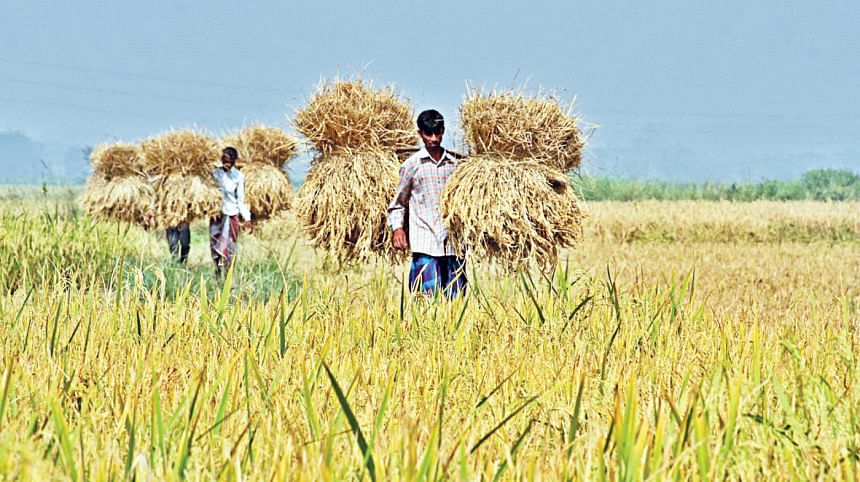
How would you evaluate Bangladesh's agricultural development over the past 50 years?
In underdeveloped countries, agriculture plays a major role in GDP, with a significant portion of the workforce relying on it for their livelihood. Fifty years ago, when Bangladesh gained independence, about 85 percent of the population depended on agriculture, contributing nearly 80 percent of GDP.
GDP typically comes from three sectors: industry, agriculture, and services. As agricultural productivity rises, employment in the sector declines due to mechanisation, better inputs, and improved irrigation. In Bangladesh, farmland expansion is no longer viable, so increasing productivity is the only option. However, higher productivity reduces agricultural employment. Today, only 45 percent of the population depends on agriculture, and its GDP contribution has fallen to around 13-14 percent. Official statistics may underestimate this figure, and the actual contribution of the agriculture sector to GDP could be closer to 17-18 percent, considering the rise in intermediate crops and overall productivity.
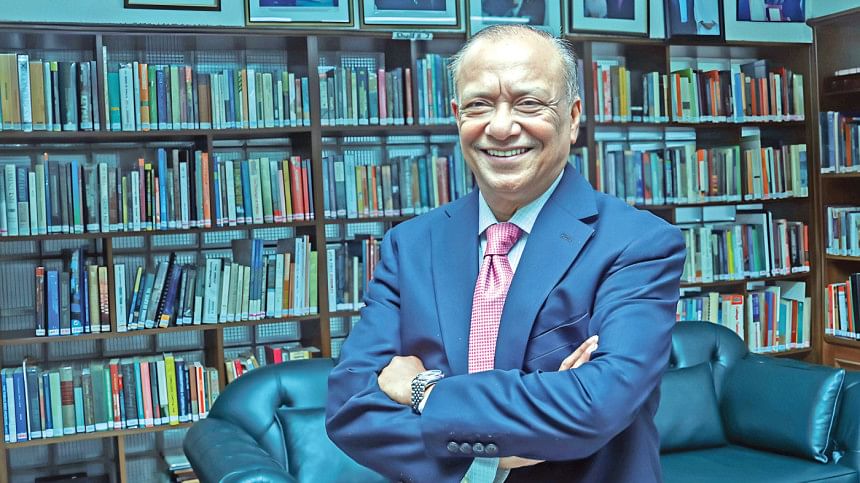
As agriculture's workforce shrinks, industrial expansion is essential. Each year, two million people enter the job market, with agriculture unable to absorb them. Increased industrial investment is necessary to offset this shift.
This structural transformation is natural. While agriculture's share in GDP is declining, total production is increasing due to higher yields. The challenge is ensuring industrial growth keeps pace with employment needs.
Why is the cost of agricultural production high for farmers in Bangladesh?
Every year, the cost of water and electricity for irrigation increases. The groundwater level is dropping, so in many areas, motors and pipes need to be replaced or repositioned deeper. The deeper the water, the higher the cost. The soil in Bangladesh is also severely degraded due to excessive use of chemical fertilisers.
Another issue is related to labour costs, as well as the costs of essential goods. Additionally, there is a lack of a compensation mechanism for farmers who suffer losses due to natural disasters. In many countries, including India, farmers are insured against such losses. For example, in India, if the temperature rises above 36°C, farmers automatically receive compensation. However, in Bangladesh, there is no insurance or compensation system for farmers. As a result, when farmers suffer losses, their costs rise, exacerbating their financial difficulties.
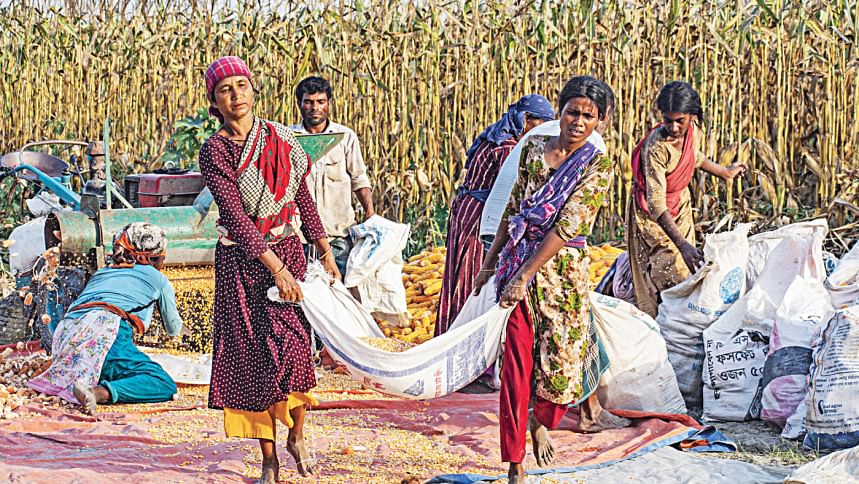
How do you assess the commercialisation of Bangladesh's agricultural sector and the role of large industrial conglomerates in this process?
In many countries, higher agricultural productivity leads to commercialisation, but Bangladesh has lagged due to disorganised land management. Land inheritance traditions cause fragmentation, reducing per capita land availability to just 0.67 acres—too small for commercial production. Commercial agriculture requires at least 200-500 acres. Productivity has improved, but this is due to smallholders intensively cultivating their land rather than commercial farming.
Land availability is also declining due to urbanisation, industrialisation, salinisation, and river erosion. As a result, commercialisation of staple crops like rice seems unlikely. However, sectors like livestock farming could become commercialised. Smallholders are more intensive farmers than large landowners, who often lease out land with lower cropping intensity.
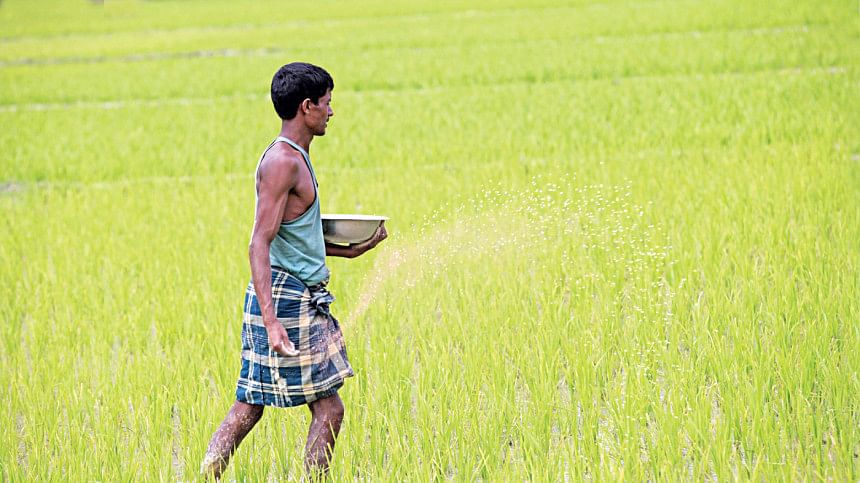
The increasing involvement of industrial conglomerates in agriculture is positive but does not equate to commercial farming in production. Companies like Pran facilitate contract farming by supplying seeds and purchasing produce at fixed prices. While this commercialises agricultural goods, production itself remains dominated by small-scale farmers. Bangladesh is considered self-sufficient in food, yet market prices fluctuate with import disruptions and rising global costs. How can food security be ensured?
There are two key issues. First, politicians often present misleading data. While the government claims self-sufficiency, salt is the only item we do not import. We do not import vegetables, but that does not mean we have enough. The WHO recommends 250 grams of vegetables per adult daily, yet we produce 30 percent less than required.
Last fiscal year, Bangladesh did not import rice—an exception in the past decade. However, this year, we need to import 2 million tonnes by May, with 500,000–600,000 tonnes already brought in. We require 8–8.5 million tonnes of maize but produce only 4–4.5 million. For wheat, we need 9 million tonnes but grow just 400,000–500,000. Maize is vital for poultry and egg production, and this year, even potatoes are being imported.
Achieving full self-sufficiency is impossible—we import 90 percent of edible oil and 80–90 percent of sugar. The key is managing the supply chain effectively. Importing at the right time and from the right sources can stabilise markets. For example, importing onions in peak season hurts farmers. A coordinated approach is needed to balance fair prices for farmers and stable supply for consumers. The real challenge lies in improving marketing systems and organising supply chains.
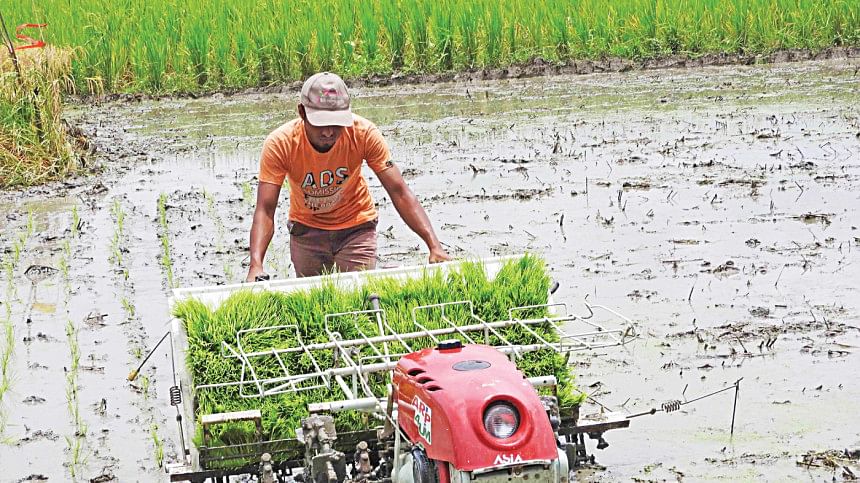
How do you view the government's claim that an unseen syndicate is responsible for rising staple food prices?
The term 'syndicate' has become an overused and misleading buzzword in Bangladesh. Government officials use it to divert public attention from real issues. Take sugar, wheat, or edible oil—only a few importers dominate these markets because large-scale imports require significant investment. For instance, importing wheat from Ukraine typically involves shipments of at least 10,000 tonnes. Smaller shipments of 3,000 tonnes would still cost around $10 million or thousands of crores in taka, making it unfeasible for ordinary traders.
As a result, high-level syndicates do exist in essential commodity imports. The government has the capacity to import these products, yet its involvement has never led to lower prices. Bangladesh has no precedent for government-imported goods reducing market rates. Even in sectors like petroleum and gas, where the government plays a direct role, prices continue to rise.
Bangladesh's agricultural universities are making significant progress, but how effectively are their advancements benefiting farmers on the ground?
There is no direct relationship. I do not wish to undermine the contributions of agricultural universities. They offer agricultural degrees, and many graduates are engaged in meaningful work. These universities also conduct research, alongside institutions such as BARI and BINA.
However, a major issue is that researchers and those involved in marketing agricultural products operate in isolation. In countries like the United States, 80 percent of seed companies obtain their products from universities. In many countries, new crop varieties undergo quality assessment and are sold to the highest bidder, but Bangladesh lacks such a system.
I once approached BARI, requesting exclusive access to a specific variety, assuring them that we would handle production and sales. They responded that the law only permits them to supply BADC. However, once research is transferred to BADC, progress stagnates.
A strong link between agricultural researchers and commercial enterprises is essential; without it, research will not effectively benefit farmers.
What is the current status of seed availability in Bangladesh?
Bangladesh needs around 4,000 tonnes of certain vegetable seeds, but only 1,000 tonnes are imported. Many crop seeds, such as cauliflower, cabbage, coriander, and carrots, cannot be produced locally due to climatic limitations, as they originate from colder regions.
Until recently, no entity in Bangladesh—whether BARI, BINA, or any university—had successfully developed a small cucumber variety. Our company, Lal Teer, spent 14 years developing one. We have now entered the seed production phase, and this variety is being cultivated widely.
At Lal Teer, we develop seed varieties in accordance with international quality standards. Our seeds are also exported—last year alone, Lal Teer exported seeds worth $2 million, including tomatoes, green chillies, and various other crops, to 11 countries. If our seeds were not of high quality, international buyers would not accept them.
I estimate that if Lal Teer sells seeds worth Tk 100 crore, at least Tk 10 crore worth of seeds are unofficially smuggled into India. Due to Indian regulations, we cannot export them legally. We have already raised this issue with the Foreign Ministry. While Indian seeds enter our market freely, we cannot export ours to India.
Given Bangladesh's vulnerability to climate change and frequent natural disasters, what measures should be taken to enhance the resilience and sustainability of the agricultural sector?
The main challenges for agriculture in Bangladesh are as follows: Limited arable land. A lack of seed varieties that meet consumers' taste and aroma preferences. The growing impact of climate change.
To address these issues, we are establishing a new R&D station in Rampal, in the south of the country, where temperatures are higher. We are studying the effects of heat on crop production. Additionally, we are conducting trials on salt-resistant crop varieties, as salt intrusion is increasingly threatening agriculture.
Technological solutions can also play a role. If we can properly adopt and utilise biotechnology, it could help mitigate climate change effects. However, our progress in this area remains slow, and significant advancements will take time.

 For all latest news, follow The Daily Star's Google News channel.
For all latest news, follow The Daily Star's Google News channel. 







Comments